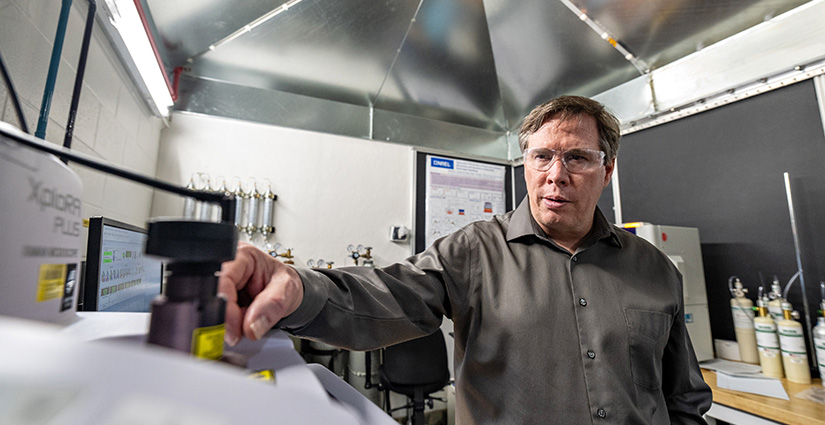Starting With Safety: NREL Approach Streamlines Early-Stage Battery Development

From current on-road vehicles to future electrified aircraft, the safety and reliability of energy storage systems is critical across battery applications. Before entering the market, all battery systems undergo thorough reviews and certifications to confirm they operate safely in both routine and extreme conditions, including fluctuating temperatures, repeated charging and discharging, and a full range of driving cycles.
"To ensure battery safety, manufacturers must design battery systems that mitigate risks during worst-case scenarios," said NREL's Donal Finegan, senior scientist in NREL's Electrochemical Energy Storage group. Catastrophic failures for individual cells are rare, but battery packs containing thousands of cells increase the overall risk. Extreme temperatures due to single cell failure can lead to thermal runaway, igniting dangerous and toxic fires that spread across the entire battery pack.
Thermal safety is at the heart of the National Renewable Energy Laboratory's (NREL's) battery research. The laboratory's scientists provide exhaustive thermal characterization of battery systems, looking beyond the industry-standard pass/fail certification process to understand what exactly occurs within battery structures before, during, and after failure. As demand for batteries continues to grow, NREL experts are dedicated to developing fresh approaches to identify potential battery hazards and accelerate nationwide battery safety research. A recent study published in Nature Communications offers a new technique for predicting the variability of thermal runaway behavior, drawing from prior NREL research that found correlations between the cell's ejected mass and heat generation.
Traditionally, thermal characterization relies on advanced equipment and capabilities—such as fractional thermal runaway calorimeters—to provide the precise thermal measurements needed to determine heat output during battery failure and effectively design safe and lightweight battery packs. However, this equipment is not widely available, making these evaluations both expensive and time consuming and inhibiting the rapid uptake of new cell types into battery packs. A more accessible process for early-stage innovations would allow researchers to understand the risks of prospective cells and introduce optimized battery designs more quickly, meeting consumer demand for faster charging, increased vehicle range, and improved lifetimes.
"This study proposes a simplified solution," said NREL's Paul Gasper, journal article coauthor and senior scientist in NREL's Electrochemical Energy Storage group. "Although there is a wide spectrum of ways batteries may fail, our models show the correlation between certain failure characteristics."
NREL's newest research successfully demonstrated how streamlined, low-cost measurements, such as ejected mass during thermal runaway, could be used to accurately predict complex thermal behaviors for new cell types that normally require expensive calorimetry measurements.
"Companies of any size can use this informed approach," Finegan said. "Although we still recommend using a calorimeter for official safety testing, this approach can help narrow down the safest battery options for your specifications before advancing to that stage of research."
To design this process, researchers leveraged calorimetry measurements from commercial lithium-ion cells available in the open-access Battery Failure Databank created by NREL and NASA. As the largest public database containing information on cells undergoing thermal runaway, the Battery Failure Databank provided the high-quality and robust data needed to train a machine learning model to identify which battery types exhibit predictable failure characteristics.
This new approach will empower energy storage innovators to accurately and rapidly estimate the safety risks of new battery designs with minimal expense and effort. Faster, easier methods to evaluate these thermal characteristics will reenergize the battery research community, uniting manufacturers and system designers in our common goal to ensure the safety of next-generation battery packs for applications like electrified transport and grid-scale storage.
Learn more about NREL's energy storage and sustainable transportation and mobility research. And sign up for NREL's quarterly transportation and mobility research newsletter, Sustainable Mobility Matters, to stay current on the latest news.

